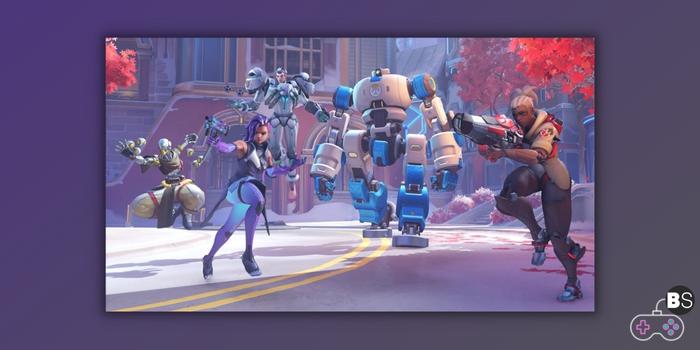
Overwatch is a team-based multiplayer role-playing game (RPG) created and launched by Blizzard Entertainment in 2016. The game sets twelve players into two teams of six, with each player picking an array of heroes with different roles. It also has various game modes, including Competitive Play.
If you’re a newbie or an experienced player interested in climbing the Overwatch ranks, here’s a detailed guide about the famous Competitive Play mode and all you need to know about Overwatch rank distribution.
Overwatch Rank Explained
When entering the competitive mode, you’ll be classified between various ranks. But first, you’ll undergo a series of Placement Matches. After that, you’ll receive your Skill Rating or SR, which determines your rank. Also, various factors can affect your rank, but it mainly depends on your SR.
What is SR in Overwatch Ranked?
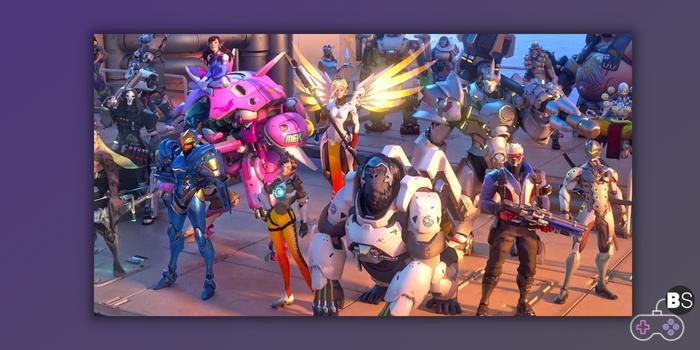
As its name suggests, SR, or Skill Rating, is a metric used to determine a player’s skill in Competitive Play. It helps classify a player’s rank or tier and scales from 1 to 5000, with 5000 being the highest. For Role Queue mode, you’ll receive a different SR for each role—compared to Open Queue, where you’ll only be assigned one SR.
Contrary to what many players think, your SR depends more on your win/loss (W/L) ratio than your kills/deaths/assists (KDA) rating—so you’ll benefit more from being a team player than focusing on your own stats.
How is Overwatch SR Determined?
First, you’ll go through a series of Placement Matches, with five matches per role in Role Queue and ten in Open Queue. After gaining your first SR, you’ll lose or earn points depending on the outcome of your future matches on Competitive Play.
Knowing the exact amount of SR that you’ll get for each match is quite impossible due to Blizzard’s complicated algorithm. So, you’ll be better off focusing on winning instead of losing to increase your SR. However, you won’t lose or gain SR after a draw results in a match.
What are the Different Ranks in Overwatch?
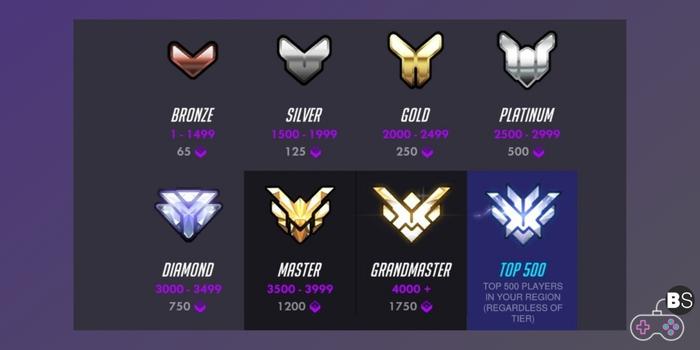
Overall, there are seven ranks in Overwatch, with a badge displayed on your character’s portrait. After your placement matches, you’ll be assigned between Bronze to Master (3900 SR max.). Once you gain enough SR, you’ll be promoted to a higher tier. You’ll be demoted to a lower tier when you lose too much.
Here is the full list of Overwatch ranks, along with their required SR:
- Bronze: 1-1499 SR
- Silver: 1500-1999 SR
- Gold: 2000-2499 SR
- Platinum: 2500-2999 SR
- Diamond: 3000-3499 SR
- Master: 3500-3999 SR
- Grandmaster: 4000+ SR
- Top 500: Top 500 players in a region, regardless of rank or tier.
To clarify, the Top 500 rankings are more of a title than an actual rank. Most players in this tier are spread among Grandmaster and Master ranks. In rare cases, players from the Diamond rank have belonged in the Top 500.
Around 75% of Overwatch players belong in the Platinum, Silver, and Gold ranks, making up most of the player base.
Overwatch Rank Rewards
Reaching a specific rank can give you various rewards, with the gifted Competitive Points (CP) being prominent. You can use CP to unlock golden guns—cost 3000 CP per hero—and other rare items in the game. An exclusive spray and player icon are also given to players who have just completed their placement matches.
While you’re given a small amount of CP after each game, you’ll also receive a fixed amount of CP at the end of the Competitive Season, depending on your rank. The top 500 players are given their own animated and exclusive spray.
How to Gain SR & Rank Up in Overwatch
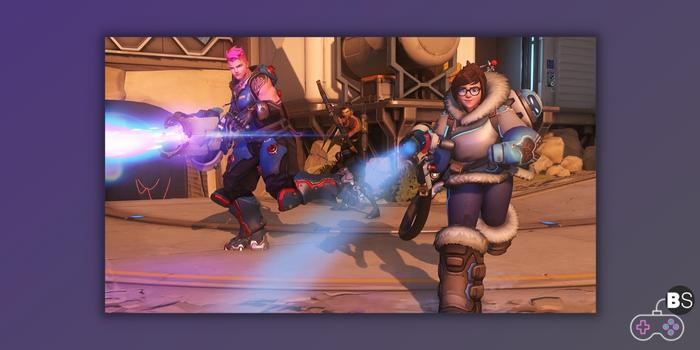
Getting through a specific rank can be challenging for any player. Besides knowing your heroes’ strengths and how to play the game, some minor details can help you rank better. Here are some tips that you can do to increase your chances of gaining SR and ranking up in Overwatch.
Play with a group
Like any team-based game, playing with a group you’re familiar with increases your chances of winning and ranking up. It helps to play with friends of similar ranks, and you can communicate well with them. However, if you lack friends who play Overwatch, you can look for more players in Overwatch forums, Reddit, etc. Also, don’t forget to message skilled players after a match, especially after a win.
Use Your Mic
One of the most underrated but main contributors to a win in Overwatch is communication. It helps you to coordinate and plan with your other players, especially when attempting to do combos and focusing on specific targets.
For instance, if you’re playing as a Tank, you can let your other players know when a shield is about to collapse. If you’re playing as a Support, you can guard your DPS and Tanks for a potential attack on your backline. DPS players can let everyone know where their damage is directed to.
Take a break
If you’re one of the more passionate players deep into a Comp grind, it’s beneficial to walk away from the game and take a break, especially when you’re losing SR on consecutive games.
In a nutshell, it’s better to play a different mode or do something else than playing more ranked matches that can potentially get you tilted anyway. It also helps to treat each match as their own, and though it’s easier said than done, avoid putting too much emotion on matches.
Tiers in Overwatch
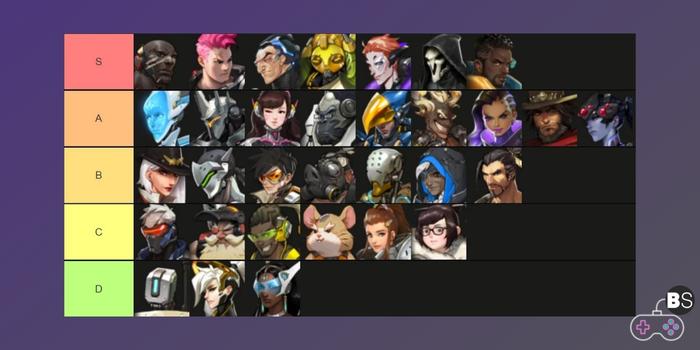
Tiers in Overwatch are determined by your current SR, which means that it’s also a great indicator of your skill in the game. Although grinding for several hours can help you greatly in hero mastery and decision-making, it won’t directly mean an increase in your tier or rank.
Here’s a breakdown by Jeff Kaplan (Vice President of Blizzard) in 2018 about Overwatch players’ distribution among different tiers:
- Bronze – 8%
- Silver – 21%
- Gold – 32%
- Platinum – 25%
- Diamond – 10%
- Master – 3%
- Grandmaster – 1%
As mentioned earlier, most Overwatch players end up in the Silver, Gold, and Platinum tiers. These tiers act as a training ground for most players who want to improve their skills in the game, although lacking in team play. However, higher tiers such as Diamond, Master, and Grandmaster focus more on team play and coordination. This also applies to the Top 500 players focused on maintaining their position in their regions.
Top 500
The Top 500 leaderboard is released two weeks after the start of each season. It contains the 500 best players in a specific region—these players will have an exclusive animated spray and a special badge. To qualify in the Top 500, you must have a minimum of 50 wins in Competitive Play.
Overwatch Rank Badges
Each rank will get a different badge in Overwatch. Here is the list of available rank badges you can get in Competitive Play mode.
| BADGE | TIER |
|---|---|
 | Bronze |
 | Silver |
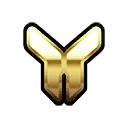 | Gold |
 | Platinum |
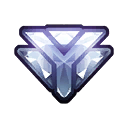 | Diamond |
 | Master |
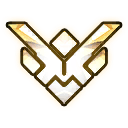 | Grandmaster |
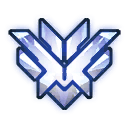 | Top 500 |
Group Skill Rating Restriction
If you’re planning to play as a group in Competitive Play, there are certain restrictions that you should keep in mind. It’s put in place specifically to avoid skill imbalance during matchmaking.
- Players in Bronze, Silver, Gold, Platinum, and Diamond tiers cannot group with other players with an SR difference of more than 1000.
- Players with their Placement Match cannot group with players in the Diamond tier or greater.
- Players in Master cannot group with other players with an SR difference of more than 500.
- Players in the Grandmaster tier cannot group with other players with an SR difference of more than 350.
The Playing Styles of Each Tier
Generally, there’s no specific playstyle for each tier in Competitive Play since styles can vary from player to player. However, there are some trends that you might see in a pool of players on each tier.
Bronze and Silver
These tiers contain the majority of players that are still working on the basics of the game. You might encounter players grinding a specific hero or trying out various heroes in each match. Team play is also rare in these tiers since players are trying out different heroes and are still working on their in-game mechanics.
Gold
The Gold tier contains most of the players in Competitive Play, which most likely means this is the most toxic tier. You’ll encounter players grinding out their favorite heroes or working on their coordination when playing in a group. When ranking up from Silver, you might be stuck in this rank for a while.
Platinum
Platinum players shift their focus more on team play and coordination than great focus on individual play. Players on this tier are more adaptable to different roles, strategies, and synergy on other skills. Also, players tend to use their microphones more often in-game, and competition rises to a higher level.
Diamond
You can classify players on this tier as passionate Overwatch players who can rise to the competition. Players in this tier are aware of the map and can coordinate various strategies with their teammates. Teamwork and communication also play an integral role in this tier.
Master
The Master tier contains players who have mastered the game’s mechanics and know their roles. You can sometimes find pro players in this tier.
Grandmaster
Most pro players and famous Overwatch streamers belong in this tier. Considered the top 1% of all the Overwatch players, you can expect high competition and brilliant talents in this tier.
FAQs
The highest rank in Overwatch is the Grandmaster rank or GM. To reach this tier, you must have 4000 SR and greater. It’s the top 1% of all Overwatch players and contains most of the game’s pro players, streamers, and other highly-skilled individuals.
After possessing the basic skills and knowledge in the game, landing between the Silver, Gold, and Platinum ranks is already an achievement since most Overwatch players belong to this tier. However, the best rank to aim for is Diamond—you’ll experience competitive matches and will make use of your intangibles, such as in-game sense, team coordination, and map awareness.

A gaming lover from a very young age, Justin has always had a keen eye for building his own computers or racing sims so that he can race his identical twin (and usually lose at the actual race).
Justin in the founder of BeStreamer and sees it as a free resource to help all gamers around the world




Leave a Reply